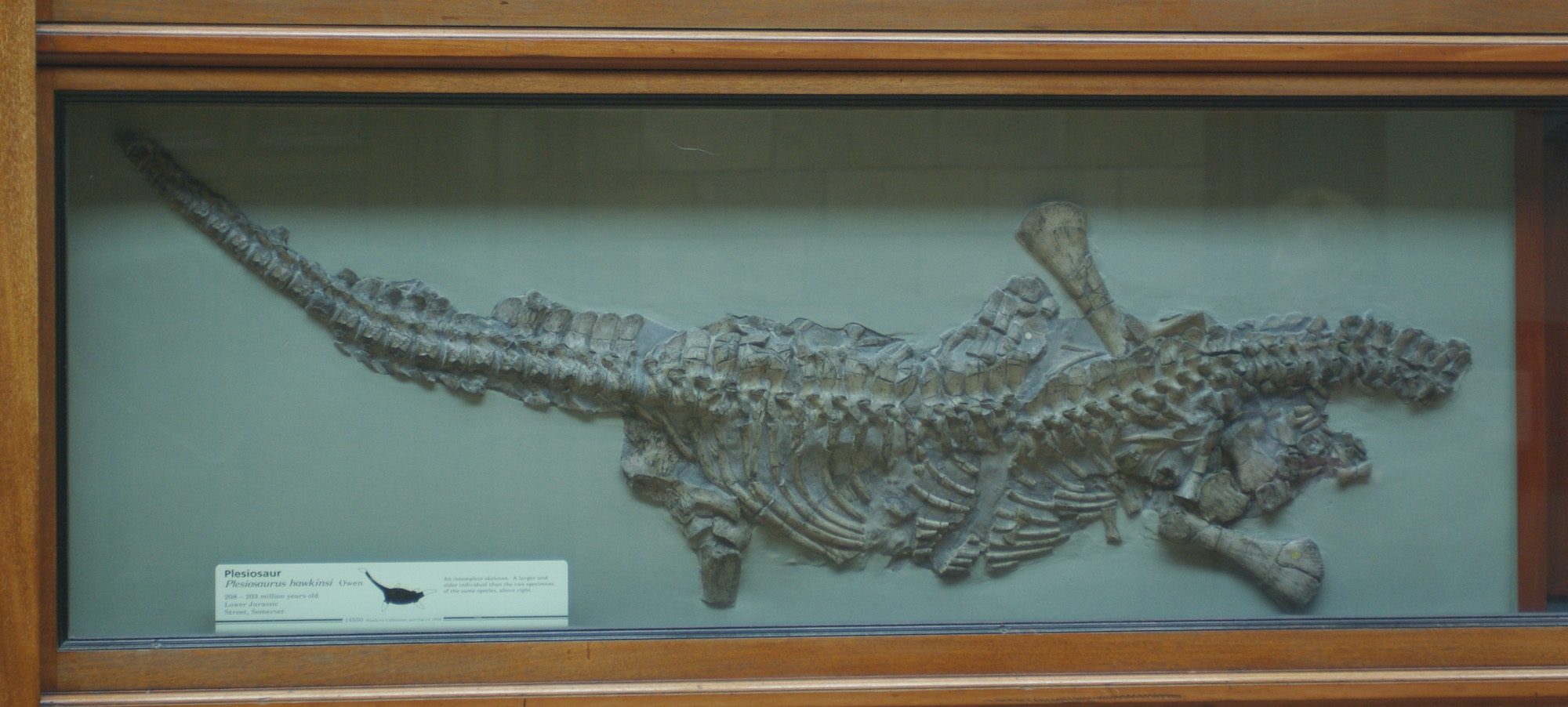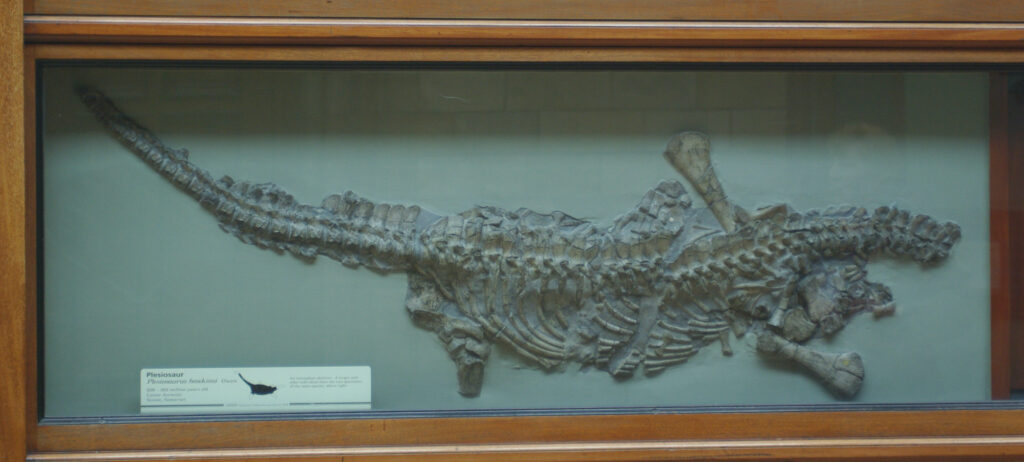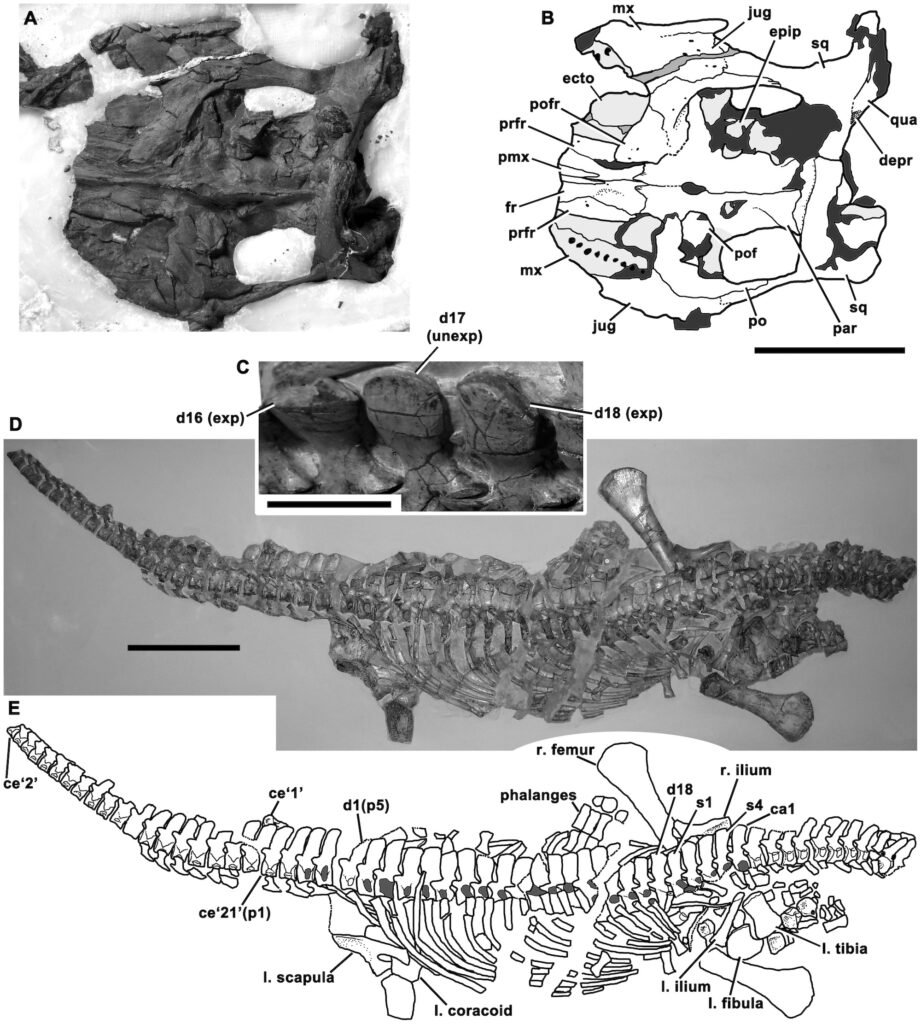Avalonnectes

A. arturi
Avalonnectes is a small-bodied basal rhomaleosaurid. Avalonnectes was named by Benson, Evans and Druckenmiller (2012) for a partial skeleton including the rear part of the skull from the lowermost Jurassic of Street, Somerset, UK. The specimen (NHMUK PV OR 14550) was previously referred to Thalassiodracon hawkinsii and is one of many historical plesiosaur skeletons preserved on slabs on display in the Natural History Museum, London. The specimen was formerly part of the Hawkins’ Collection, which the British Museum (=NHM) purchased in two lots in 1834 and 1840.
The skull of NHMUK PV OR 14550 is kept in storage and is not on display with the rest of the skeleton. Huxley (1858), who was characteristically well ahead of his peers by actually citing the specimen number, noted that the skull was “unfortunately displaced”. This was subsequently noted by Lydekker (1889) who specified that the skull was “situated near the commencement of the tail”. By which, I presume he meant the base of the tail rather than the tip. This may help explain why the skull is kept separately – it sounds like the skull was actively separated from the rest of the specimen at some point.
The name refers to Avalon, an island from the legend of King Arthur, often associated with Glastonbury, near Street, where Avalonnectes was discovered. ‘Nectes’ is Greek for ‘swimmer’. The species has a double-meaning: it honours palaeontologist Arthur Cruickshank (1932–2011) and is a reference to King Arthur.
Avalonnectes has one autapomorphy (unique diagnostic character): a low number of dorsal vertebrae (18–19).
Avalonnectes arturi is the type and only species of Avalonnectes.



